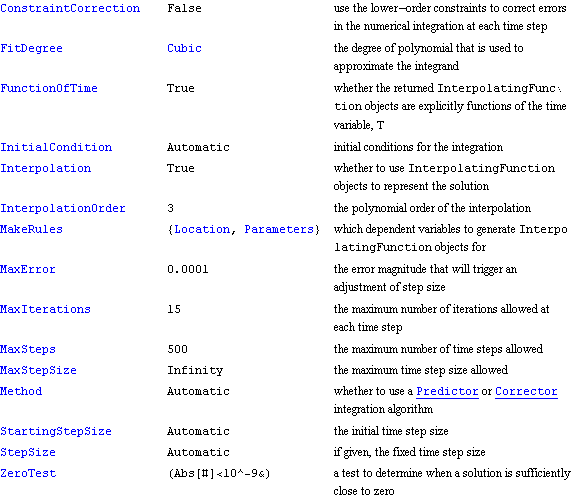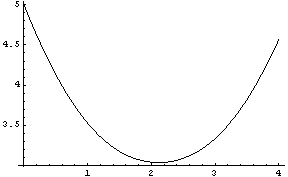SolveFree
2D/3D• SolveFree[freesys, options] finds the solution to the FreeSystem object built by SetFree. SolveFree returns a list of rules representing the solution to freesys.
• SolveFree[freesys, endtime, options] integrates the equations of motion in freesys and returns the time domain free response. • When finding the time domain free response, SolveFree returns a list of InterpolatingFunction rules representing the solution.
• When finding the time domain free response, the start time is taken from the initial conditions.
• The following options can be given:

• The InitialCondition option is used to specify the initial location variables for a FreeSystem object that is to be solved for free velocity, or the initial location and velocity for a FreeSystem object that is to be solved for free acceleration.
• Values for parameters can be set with the InitialCondition option, in which case they override the values given in the current parameters list or contained in the FreeSystem object.
• The StartingStepSize option is effective only if StepSize->Automatic is given.
• The MaxIterations option is used only when the system is nonlinear in terms of the Lagrange multipliers, so that an iterative solution must be used at each time step.
• If Interpolation->False is given, the solution data is returned as lists of numbers instead of InterpolatingFunction objects.
• See also: SolvePath. Further Examples Load the Modeler2D package and define a simple model. Here we build a FreeSystem object that can be used to simulate the underconstrained motion of the help model when the constraint that controls the rotation of the crank has been removed. Before calling SetFree, a velocity solution is generated with SolveMech so that initial conditions for the location and velocity of each body will be available.
Out[3]= |  |
Because the help model has only one body with nonzero mass and one applied load (the link body has a 10-unit mass and a 10-unit applied load in the X direction), the instantaneous free acceleration is somewhat predictable. The X acceleration of the link body, X3dd, is equal to 1.0.
Out[4]= |  |
Here we integrate the free acceleration of the help model with respect to time for four seconds.
Out[5]= |  |
Here is a plot of the X position of the link. The link is initially decelerating until its X coordinate reaches a local minimum, and then it accelerates the other way.

Out[6]= |  |
See HelpModel2D.
|